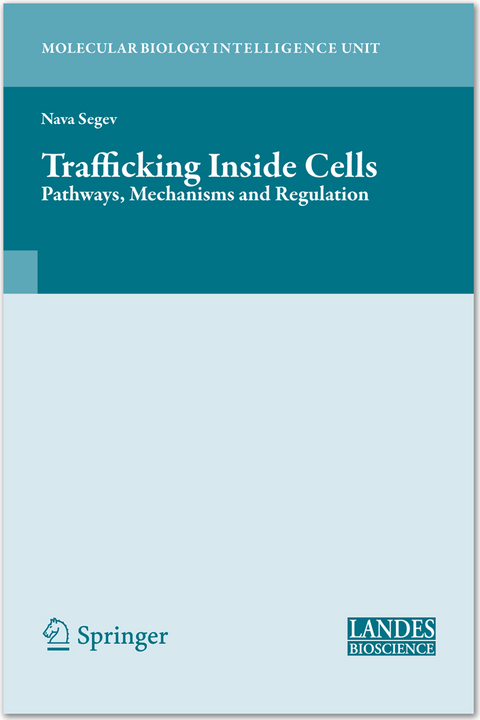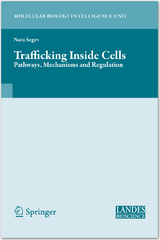Trafficking Inside Cells
Springer-Verlag New York Inc.
978-0-387-93876-9 (ISBN)
The SecretoryPathway The transport ofproteins and lipids from their site ofsynthesis at the endoplasmic reticu- lum (ER) to the cellsurface ismediated by the secretory pathway and isan essential process in eukaryotic organisms. A great variety ofmolecules are extruded from cellsby the action ofthe secretory pathway, including extracellular matrix components that provide the foundation for constructing tissuesand organs. Moreover, this pathway playsa major role in the biogenesisof the plasma membraneand itsexpansion before celldivision. Therefore, withoutsecretion there would be no cells,tissuesor organs, and so it issafeto saythat we oweourvery existence to the secretory pathway. To understand the process ofsecretion we must learn about the organelles that compose the secretory pathway; the ER and Golgi apparatus, and the transport vesicles these or- ganelles produce. The membrane ofthese organelles is primarily synthesized and assembled at the ER but with contributions from mitochondria (phosphatidylethanolamine) and the Golgi apparatus (sphingolipids).
Newly synthesized proteins destined for secretion gain en- try into the secretory pathway by translocation across the ER membrane. This translocation apparatus also integrates proteins into the membrane and establishes their topology with respect to the lipid bilayer (seeChapter 7). Many secretory proteins are covalently modified with oligosaccharides to produce glycoproteins, a biosynthetic process initiated in the ER and continued in the Golgi apparatus. Once proteins are properly folded and modified in the ER, they are allowed to leave and are ushered into COPlI-coated carrier vesiclesforming at specific exit sites (see Chapters 1 and 8).
Compartments and Pathways.- Overview of Intracellular Compartments and Trafficking Pathways.- How We Study Protein Transport.- The Golgi Apparatus.- The Endocytic Pathway.- Regulated Secretion.- Mechanisms.- Overview of Protein Trafficking Mechanisms.- Entry into the Endoplasmic Reticulum: Protein Translocation, Folding and Quality Control.- COP-Mediated Vesicle Transport.- Clathrin-Mediated Endocytosis.- Biogenesis of Dense-Core Secretory Granules.- Lipid-Dependent Membrane Remodelling in Protein Trafficking.- Carrier Motility.- Tethering Factors.- Intracellular Membrane Fusion.- Regulation and Coordination with Other Cellular Processes.- Regulation and Coordination of Intracellular Trafficking: An Overview.- Regulation of Protein Trafficking by GTP-Binding Proteins.- Posttranslational Control of Protein Trafficking in the Post-Golgi Secretory and Endocytic Pathway.- Actin Doesn’t Do the Locomotion: Secretion Drives Cell Polarization.- Intracellular Trafficking and Signaling: The Role of Endocytic Rab GTPase.- The Exocytic Pathway and Development.
| Reihe/Serie | Molecular Biology Intelligence Unit |
|---|---|
| Mitarbeit |
Anpassung von: Aixa Alfonso, Gregory S. Payne, Julie Donaldson |
| Zusatzinfo | 4 Illustrations, color; XXI, 445 p. 4 illus. in color. |
| Verlagsort | New York, NY |
| Sprache | englisch |
| Maße | 155 x 235 mm |
| Themenwelt | Medizin / Pharmazie ► Studium |
| Naturwissenschaften ► Biologie ► Biochemie | |
| Naturwissenschaften ► Biologie ► Genetik / Molekularbiologie | |
| Naturwissenschaften ► Biologie ► Zellbiologie | |
| ISBN-10 | 0-387-93876-1 / 0387938761 |
| ISBN-13 | 978-0-387-93876-9 / 9780387938769 |
| Zustand | Neuware |
| Haben Sie eine Frage zum Produkt? |
aus dem Bereich




